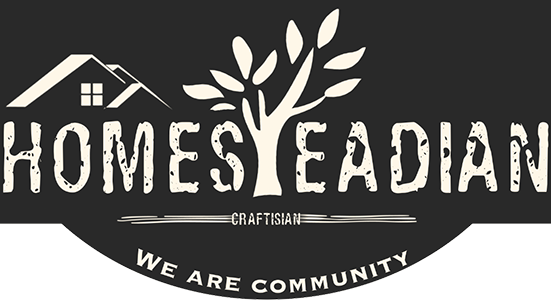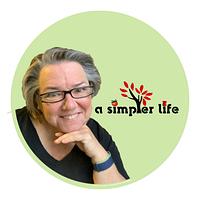Share your homesteading projects
Make new homesteading friends
Ask homesteading questions
Blog your homesteading journey

Christen | The Cultivation of Cozy
2 posts
and
4 followers
in over 2 years
in over 2 years
Simple Seed Starting Tips and Tricks
A few Simple Seed Starting Tips and Tricks will have you on your way to growing a successful garden.
Learning to Grow a Garden
Love the idea of gardening but feel overwhelmed at the thought of starting? Questions like, how do I learn to garden or what do I need to know to grow a garden may be swirling in your head.
Have you tried to start a garden but there is so much information how there that you don’t know where to begin and everything you try to grow, doesn’t.
Maybe you have grown a small garden but you want to learn more.
Well friends, I have been at every single one of these steps. And I can tell you that through patience, the desire to learn, and someone willing to come alongside and encourage you, it is possible to start your own seeds and grow your own food.
What is the easiest way to start seeds indoors?
Where better to start than with seed starting? Growing plants from seed gives you the ability to nurture your plants from start to harvest.
Here I will give you a very simple list of how to start your plants from seed.
Make a list of what you will grow. It is so tempting to want to grow all of the plants! But starting too many at one time, especially if this is all new to you, can result in a major case of garden overwhelm. It’s not new to me, and I occasionally still do this!
Take into consideration how much space you can utilize for a garden. Also consider how much space each plant requires.
What brand of seeds is best?
Next you need seeds! I can’t tell you which company is best. But if you are not sure where to buy from, my favorite seed companies are Baker Creek Heirloom Seeds, Sow True Seeds, and Annie’s Heirloom Seeds.
Local stores such as hardware stores, grocery stores, and even a garden center will have seeds for sale as well.
What can I put seeds in to grow?
Purchase containers, or reuse items you already have, to plant your seeds in! Some easy ideas are egg cartons, disposable drink cups, or even empty toilet paper tubes or paper towel tubes.
What is the best material to start seeds in?
Make sure you use a quality seed starting soil. I have had a lot of success with both Harvest Organic Potting Mix found at Lowe’s and FoxFarm Potting Soil Mix.
Place seed starting soil into a large bowl and add water until the soil is dampened.
Fill your planting containers with your dampened seed starting soil.
Be sure to check your seed packets for the depth at which you should plant your seeds. A general rule is the length of the seed times two.
How many seeds you plant in each container is up to you. I like to plant 2 or 3 seeds in each container in case one does not start.
Once they sprout up, then you can thin them out if you like, or separate the seedlings into their own pots.
Once they sprout up, then you can thin them out if you like, or separate the seedlings into their own pots.
Where do I start seeds indoors?
Placing your containers or pots onto a tray makes it easier to move them around if you need to use more than one location to keep your seeds warm and in the sun.
Once you have your seeds in containers and on a tray, cover with plastic wrap or place inside a plastic trash bag until they sprout. This provides a humid environment to encourage germination.
Your seeds will need a warm environment to encourage germination also. There are many ways to do this.
You can utilize the heat your home already generates by placing your tray of seeds on a cooling rack above a floor vent.
We mostly heat with a wood stove so just keeping my seed starts in the same room as the stove is typically sufficient.
You can utilize the heat your home already generates by placing your tray of seeds on a cooling rack above a floor vent.
We mostly heat with a wood stove so just keeping my seed starts in the same room as the stove is typically sufficient.
Another option is to use a heat mat. I have done this if we have a particularly mild winter where we are not using our wood stove as much.
Once your seeds sprout, remove the plastic wrap or bag and remove from the heat mat or floor vent.
What do I do once my seeds have sprouted?
Once your seeds have sprouted, they will need 6-8 hours of sunlight from a window or artificial light.
After about 4 weeks of growth, start to add nutrients or organic fertilizer to your seedlings depending on what your particular plants require.
After about 4 weeks of growth, start to add nutrients or organic fertilizer to your seedlings depending on what your particular plants require.
Depending on what plants you are growing, you may need to replant your seedlings in larger containers before it is time to plant them outside.
Look up your zone information to determine frosts dates, so you will know the best time to move your plants outdoors.
Look up your zone information to determine frosts dates, so you will know the best time to move your plants outdoors.
Why do seedlings need to be hardened before planting?
Once your weather turns warmer (above 60 degrees F) start to set your seedlings outside for a few hours at a time to harden them off.
Your plants will need to gradually acclimate to the harsher conditions outside, such as wind and direct sunlight.
Your plants will need to gradually acclimate to the harsher conditions outside, such as wind and direct sunlight.
The exposure to the elements, especially the movement of the wind. will strengthen the cuticle of the leaves which protects against water loss when exposed to the elements of changing weather.
Words of Encouragement!
Gardening can feel like a bit much sometimes. Especially if you are already a busy housewife or an overwhelmed mom.
Give yourself grace and time to truly learn each step and be gentle with yourself if it does not work exactly the way you hope, the first time.
Give yourself grace and time to truly learn each step and be gentle with yourself if it does not work exactly the way you hope, the first time.
Gardening, for me, has been a labor of love and with much trial and error.
If you want to learn how to grow your own food, do not be afraid to get your hands dirty and keep trying until you get it. And you will get it, I promise!
I have had so many seeds that never sprouted and so many plants wither and die before I even had a chance to transplant them.
But I wanted to be able to pick my own fresh herbs for a homemade sauce, or grab a few peppers to add to a stir fry. I love the idea of taking a tiny seed and growing it into food that will feed my family. You can too friend!
So if you find yourself overwhelmed, scared of failure, or just lost and not sure where to begin, let me know! I will gladly talk you through each step and cheer you on during your first harvest!
Want to read more on gardening?
one last thing…
Planning to try this? I’d love to hear what you think in the comments below! If you loved this article, I would love it if you gave it 5 stars!
Also, let me know what you think of it and what you will use it for by tagging me @_thecultivationofcozy_ on Instagram or at The Cultivation of Cozy on Facebook!
With Joy and Support, Christen
3 Comments
Great tips for starting seeds for the garden!
I am so guilty of try everything at once, getting to know how to best grow each plant can be very overwhelming.
I ?% agree - start with a few varieties and observe and learn.
I am so guilty of try everything at once, getting to know how to best grow each plant can be very overwhelming.
I ?% agree - start with a few varieties and observe and learn.
a simpler life
Exactly Debbie! I still sometimes am guilty of trying everything at once, so I get it!
The wonderful thing about gardening is you are always learning something new. Even the master gardeners are continually learning new things.
Thanks for the feedback!
The wonderful thing about gardening is you are always learning something new. Even the master gardeners are continually learning new things.
Thanks for the feedback!
With Joy and Support, Christen
The hard part with the learning curve is that you have to wait a year to try again!
By the time you’ve figured it all out, it is 50 years later hahaha
By the time you’ve figured it all out, it is 50 years later hahaha
a simpler life

